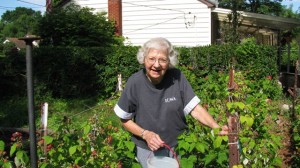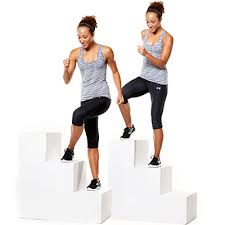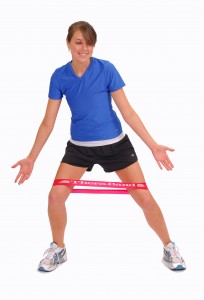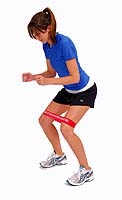Gentle Reader,
Is eggplant bad for arthritis?  Those of us who suffer the pain of arthritis, especially osteoarthritis, have the uneasy belief that night shade plants including eggplant, tomatoes, potatoes, and peppers make the pain worse. This article came across my desk thanks to Kate McCoy, LMT and friend. I was delighted to see how many great benefits there are to eating eggplant AND most importantly, that there have been no studies to substantiate that eggplant is bad for arthritis. Please read on and discover how great this vegetable is and add it to your diet.
Those of us who suffer the pain of arthritis, especially osteoarthritis, have the uneasy belief that night shade plants including eggplant, tomatoes, potatoes, and peppers make the pain worse. This article came across my desk thanks to Kate McCoy, LMT and friend. I was delighted to see how many great benefits there are to eating eggplant AND most importantly, that there have been no studies to substantiate that eggplant is bad for arthritis. Please read on and discover how great this vegetable is and add it to your diet.
Of course, I always recommend that each individual test out their own body’s reaction to the night shade plants. Perhaps you are the exception and avoiding them is in fact just the right strategy for helping alleviate your arthritis pain.
Eggplant
Long prized for its deeply purple, glossy beauty as well as its unique taste and texture, eggplants are now available in markets throughout the year, but they are at their very best from August through October when they are in season.
Eggplants belong to the nightshade family of vegetables, which also includes tomatoes, sweet peppers and potatoes. They grow in a manner much like tomatoes, hanging from the vines of a plant that grows several feet in height. While the different varieties do range slightly in taste and texture, one can generally describe the eggplant as having a pleasantly bitter taste and spongy texture.
Eggplant, cubed, cooked
1.00 cup
(99.00 grams)
Calories: 35
GI: low
NutrientDRI/DV
fiber 9.8%
vitamin B 16.6%
copper 6.6%
manganese 5.5%
vitamin B6 5.2%
vitamin B3 3.6%
potassium 3.4%
folate 3.4%
vitamin K 3.1%
This chart graphically details the % of daily value (DV) that a serving of Eggplant provides for each of the nutrients of which it is a good, very good, or excellent source according to our (Whole Foods) Food Rating System. Additional information about the amount of these nutrients provided by Eggplant can be found in the Food Rating System Chart. A link that takes you to the In-Depth Nutritional Profile for Eggplant, featuring information over 80 nutrients, can be found under the Food Rating System Chart.
Health Benefits
In addition to featuring a host of vitamins and minerals, eggplant also contains important phytonutrients, many which have antioxidant activity. Phytonutrients contained in eggplant include phenolic compounds, such caffeic and chlorogenic acid, and flavonoids, such asnasunin.
Brain Food
Research on eggplant has focused on an anthocyanin phytonutrient found in eggplant skin called nasunin. Nasunin is a potent antioxidant and free radical scavenger that has been shown to protect cell membranes from damage. In animal studies, nasunin has been found to protect the lipids (fats) in brain cell membranes. Cell membranes are almost entirely composed of lipids and are responsible for protecting the cell from free radicals, letting nutrients in and wastes out, and receiving instructions from messenger molecules that tell the cell which activities it should perform.
Rich in Phenolic Antioxidant Compounds
Researchers at the US Agricultural Service in Beltsville, Maryland, have found that eggplants are rich sources of phenolic compounds that function as antioxidants. Plants form such compounds to protect themselves against oxidative stress from exposure to the elements, as well as from infection by bacteria and fungi.
The good news concerning eggplant is that the predominant phenolic compound found in all varieties tested is chlorogenic acid, which is one of the most potent free radical scavengers found in plant tissues. Benefits attributed to chlorogenic acid include antimutagenic (anti-cancer), antimicrobial, anti-LDL (bad cholesterol) and antiviral activities.
ARS researchers studied seven eggplant cultivars grown commercially in the U.S. and a diverse collection of exotic and wild eggplants from other counties. In addition to chlorogenic acid, they found 13 other phenolic acids present at significantly varying levels in the commercial cultivars, although chlorogenic acid was the predominant phenolic compound in all of them. Black Magic—a commercial eggplant cultivar representative of U.S. market types—was found to have nearly three times the amount of antioxidant phenolics as the other eggplant cultivars that were studied. In addition to their nutritive potential, the phenolic acids in eggplant are responsible for some eggplants’ bitter taste and the browing that results when their flesh is cut. An enzyme called polyphenol oxidase triggers a phenolic reaction that produces brown pigments. Scientists have begun work on developing eggplant cultivars with an optimal balance of phenolics to ensure both optimal nutritional value and pleasing taste.
Cardiovascular Health and Free Radical Protection
When laboratory animals with high cholesterol were given eggplant juice, their blood cholesterol, the cholesterol in their artery walls and the cholesterol in their aortas (the aorta is the artery that returns blood from the heart back into circulation into the body) was significantly reduced, while the walls of their blood vessels relaxed, improving blood flow. These positive effects were likely due not only to nasunin but also to several other terpene phytonutrients in eggplant.
Nasunin is not only a potent free-radical scavenger, but is also an iron chelator. Although iron is an essential nutrient and is necessary for oxygen transport, normal immune function and collagen synthesis, too much iron is not a good thing. Excess iron increases free radical production and is associated with an increased risk of heart disease and cancer. Menstruating women, who lose iron every month in their menstrual flow, are unlikely to be at risk, but in postmenopausal women and men, iron, which is not easily excreted, can accumulate. By chelating iron, nasunin lessens free radical formation with numerous beneficial results, including protecting blood cholesterol (which is also a type of lipid or fat) from peroxidation; preventing cellular damage that can promote cancer; and lessening free radical damage in joints, which is a primary factor in rheumatoid arthritis.
Description
Eggplant, or aubergine as it is called in France, is a vegetable long prized for its beauty as well as its unique taste and texture. Eggplants belong to the plant family of Solanaceae, also commonly known as nightshades, and are kin to the tomato, bell pepper and potato. Eggplants grow in a manner much like tomatoes, hanging from the vines of a plant that grows several feet in height.
One of the most popular varieties of eggplant in North America looks like a pear-shaped egg, a characteristic from which its name is derived. The skin is glossy and deep purple in color, while the flesh is cream colored and spongy in consistency. Contained within the flesh are seeds arranged in a conical pattern.
In addition to this variety, eggplant is also available in a cornucopia of other colors including lavender, jade green, orange, and yellow-white, as well as in sizes and shapes that range from that of a small tomato to a large zucchini.
While the different varieties do vary slightly in taste and texture, one can generally describe the eggplant as having a pleasantly bitter taste and spongy texture. In many recipes, eggplant fulfills the role of being a complementary ingredient that balances the surrounding flavors of the other more pronounced ingredients.
History
The ancient ancestors of eggplant grew wild in India and were first cultivated in China in the 5th century B.C. Eggplant was introduced to Africa before the Middle Ages and then into Italy, the country with which it has long been associated, in the 14th century. It subsequently spread throughout Europe and the Middle East and, centuries later, was brought to the Western Hemisphere by European explorers. Today, Italy, Turkey, Egypt, China and Japan are the leading growers of eggplant.
Although it has a long and rich history, eggplant did not always hold the revered place in food culture that it does today, especially in European cuisines. As a result of the overly bitter taste of the early varieties, it seems that people also felt that it had a bitter disposition—eggplant held the undeserved and inauspicious reputation of being able to cause insanity, leprosy and cancer.
For centuries after its introduction into Europe, eggplant was used more as a decorative garden plant than as a food. Not until new varieties were developed in the 18th century, did eggplant lose its bitter taste and bitter reputation, and take its now esteemed place in the cuisines of many European countries, including Italy, Greece, Turkey and France.
How to Select and Store
Choose eggplants that are firm and heavy for their size. Their skin should be smooth and shiny, and their color, whether it be purple, white or green, should be vivid. They should be free of discoloration, scars, and bruises, which usually indicate that the flesh beneath has become damaged and possibly decayed.
The stem and cap, on either end of the eggplant, should be bright green in color. As you would with other fruits and vegetables, avoid purchasing eggplant that has been waxed. To test for the ripeness of an eggplant, gently press the skin with the pad of your thumb. If it springs back, the eggplant is ripe, while if an indentation remains, it is not.
Although they look hardy, eggplants are actually very perishable and care should be taken in their storage. Eggplants are sensitive to both heat and cold and should ideally be stored at around 50 degrees Fahrenheit (10 degrees Celsius). Do not cut eggplant before you store it as it perishes quickly once its skin has been punctured or its inner flesh exposed.
Place uncut and unwashed eggplant in a plastic bag and store in the refrigerator crisper where it will keep for a few days. If it is too large for the crisper, do not try to force it in; this will damage the skin and cause the eggplant to spoil and decay. Instead, place it on a shelf within the refrigerator.
If you purchase eggplant that is wrapped in plastic film, remove it as soon as possible since it will inhibit the eggplant from breathing and degrade its freshness.
Tips for Preparing Eggplant
When cutting an eggplant, use a stainless steel knife as carbon steel will react with its phytonutrients and cause it to turn black. Wash the eggplant first and then cut off the ends.
Most eggplants can be eaten either with or without their skin. However, the larger ones and those that are white in color generally have tough skins that may not be palatable. To remove skin, you can peel it before cutting or if you are baking it, you can scoop out the flesh once it is cooked.
To tenderize the flesh’s texture and reduce some of its naturally occurring bitter taste, you can sweat the eggplant by salting it. After cutting the eggplant into the desired size and shape, sprinkle it with salt and allow it to rest for about 30 minutes. This process will pull out some of its water content and make it less permeable to absorbing any oil used in cooking. This salting step makes a big difference in the flavor of a grilled eggplant so take the time to do it. I put the 1/4 inch rounds on a cookie cooling rack suspended over the sink, then pat the beads of water off before brushing with olive oil for the oven, grill or frying pan.
 Rinsing the eggplant after “sweating” will remove most of the salt. I pat dry with paper towels.
Rinsing the eggplant after “sweating” will remove most of the salt. I pat dry with paper towels.
Eggplant can be baked, roasted in the oven, or steamed. If baking it whole, pierce the eggplant several times with a fork to make small holes for the steam to escape. Bake at 350 degrees Fahrenheit (about 177 degrees Celsius) for 15 to 25 minutes, depending upon size. You can test for its readiness by gently inserting a knife or fork to see if it passes through easily.
A Few Quick Serving Ideas
- For homemade babaganoush, purée roasted eggplant, garlic, tahini, lemon juice and olive oil.
- Use it as a dip for vegetables or as a sandwich filling.
- Mix cubed baked eggplant with grilled peppers, lentils, onions and garlic and top with balsamic vinaigrette.
- Stuff miniature Japanese eggplants with a mixture of feta cheese, pine nuts and roasted peppers.
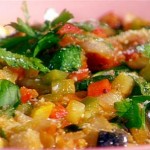
- Add eggplant to your next Indian curry stir-fry.
- Ratatouille my personal favorite after grilling. Make now with the abundance of zucchini and sweet onions. Serve cold with sour cream.
Cautions: Eggplant and Oxalates
Eggplant is among a small number of foods that contain measurable amounts of oxalates, naturally-occurring substances found in plants, animals, and human beings. When oxalates become too concentrated in body fluids, they can crystallize and cause health problems. For this reason, individuals with already existing and untreated kidney or gallbladder problems may want to avoid eating eggplant. Laboratory studies have shown that oxalates may also interfere with absorption of calcium from the body. Yet, in every peer-reviewed research study we’ve seen, the ability of oxalates to lower calcium absorption is relatively small and definitely does not outweigh the ability of oxalate-containing foods to contribute calcium to the meal plan. If your digestive tract is healthy, and you do a good job of chewing and relaxing while you enjoy your meals, you will get significant benefits—including absorption of calcium—from calcium-rich foods plant foods that also contain oxalic acid. Ordinarily, a healthcare practitioner would not discourage a person focused on ensuring that they are meeting their calcium requirements from eating these nutrient-rich foods because of their oxalate content.
Eggplant Belongs to the Nightshade Family
Eggplant is one of the vegetables in the nightshade (Solanaceae) family, which includes bell pepper, tomatoes and potatoes. Anecdotal case histories link improvement in arthritis symptoms with removal of these foods; however, no case-controlled scientific studies confirm these observations. Eggplant an arthritis are not linked, scientifically.
Nutritional Profile Click here for super detailed info on eggplant.
Eggplant, cubed, cooked
1.00 cup
99.00 gramsCalories: 35
GI: low |
| Nutrient |
Amount |
DRI/DV
(%) |
Nutrient
Density |
World’s Healthiest
Foods Rating |
| fiber |
2.47 g |
9.9 |
5.1 |
very good |
| vitamin B1 |
0.08 mg |
6.7 |
3.5 |
very good |
| copper |
0.06 mg |
6.7 |
3.5 |
very good |
| manganese |
0.11 mg |
5.5 |
2.9 |
good |
| vitamin B6 |
0.09 mg |
5.3 |
2.8 |
good |
| vitamin B3 |
0.59 mg |
3.7 |
1.9 |
good |
| potassium |
121.77 mg |
3.5 |
1.8 |
good |
| folate |
13.86 mcg |
3.5 |
1.8 |
good |
| vitamin K |
2.87 mcg |
3.2 |
1.7 |
good |
World’s Healthiest
Foods Rating |
Rule |
| excellent |
DRI/DV>=75% OR
Density>=7.6 AND DRI/DV>=10% |
| very good |
DRI/DV>=50% OR
Density>=3.4 AND DRI/DV>=5% |
| good |
DRI/DV>=25% OR
Density>=1.5 AND DRI/DV>=2.5% |
In-Depth Nutritional Profile for Eggplant
References
- Bliss RM, Elstein D. Scientists get under eggplant’s skin. ARS Magazine, 2004 January; 52 (1): http://www.ars.usda.gov/is/AR/archive/jan04/skin0104.htm. 2004.
- Ensminger AH, Ensminger, ME, Kondale JE, Robson JRK. Foods & Nutriton Encyclopedia. Pegus Press, Clovis, California. 1983.
- Ensminger AH, Esminger M. K. J. e. al. Food for Health: A Nutrition Encyclopedia. Clovis, California: Pegus Press; 1986. 1986. PMID:15210.
- Fortin, Francois, Editorial Director. The Visual Foods Encyclopedia. Macmillan, New York. 1996.
- Jorge PA, Neyra LC, Osaki RM, et al. Effect of eggplant on plasma lipid levels, lipidic peroxidation and reversion of endothelial dysfunction in experimental hypercholesterolemia. Arq Bras Cardiol. 1998 Feb;70(2):87-91. 1998.
- Kimura Y, Araki Y, Takenaka A, Igarashi K. Protective effects of dietary nasunin on paraquat-induced oxidative stress in rats. Biosci Biotechnol Biochem. 1999 May;63(5):799-804. 1999.
- Noda Y, Kneyuki T, Igarashi K, et al. Antioxidant activity of nasunin, an anthocyanin in eggplant peels. Toxicology 2000 Aug 7;148(2-3):119-23. 2000.
- Whitaker BD, Stommel JR. Distribution of Hydroxycinnamic Acid Conjugates in Fruit of Commercial Eggplant (Solanum melongena L.) Cultivars. J Agric Food Chem 2003 May 21;51(11):3448-54. 2003.
- Whitaker BD, Stommel JR. Distribution of hydroxycinnamic acid conjugates in fruit of commercial eggplant (Solanum melongena L.) cultivars. J Agric Food Chem. 2003 May 21; 51(11): 3448-54. 2003.
- Wood, Rebecca. The Whole Foods Encyclopedia. New York, NY: Prentice-Hall Press; 1988. 1988. PMID:15220.
For education only, consult a healthcare practitioner for any health problems.
Email me your experiences with eggplant and your health. Is eggplant bad for arthritis in your experience? Let’s share.
Be well, Do well and Keep Moving,
Betsy
betsy@hihohealth.com
203 933 1889
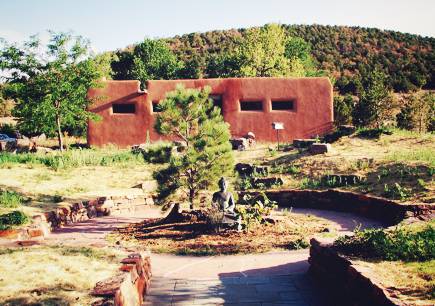
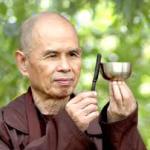 Thich Nhat Than, the Vietnamese Zen bhuddist who has offered so much peace making teaching to us Americans over the last 45 years and has been a spiritual guide for many, is lying in an ICU with a cerebral hemorrhage.
Thich Nhat Than, the Vietnamese Zen bhuddist who has offered so much peace making teaching to us Americans over the last 45 years and has been a spiritual guide for many, is lying in an ICU with a cerebral hemorrhage.![labyrinthUpaya[1]](http://www.grandmabetsybell.com/wp-content/uploads/2014/11/labyrinthUpaya1-150x150.jpg)
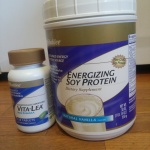 money back. That’s a big promise and seldom cashed in on.
money back. That’s a big promise and seldom cashed in on.
![CAM01994[1]](http://www.grandmabetsybell.com/wp-content/uploads/2014/10/CAM019941-150x150.jpg)
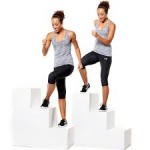
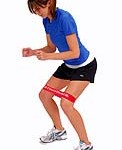

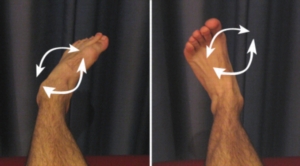
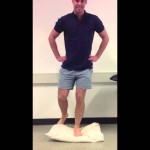
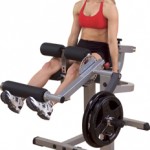
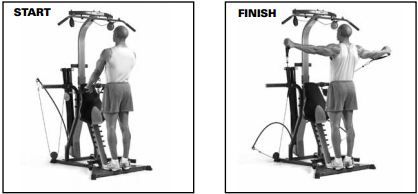

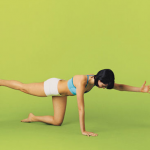



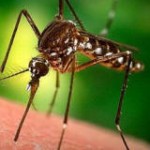
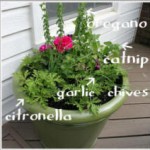
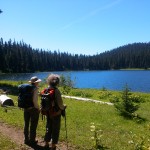
![Long_Beach_7-16-14jpg_(1)_(2)[1]](http://www.grandmabetsybell.com/wp-content/uploads/2014/07/Long_Beach_7-16-14jpg_1_21-300x222.jpg)
